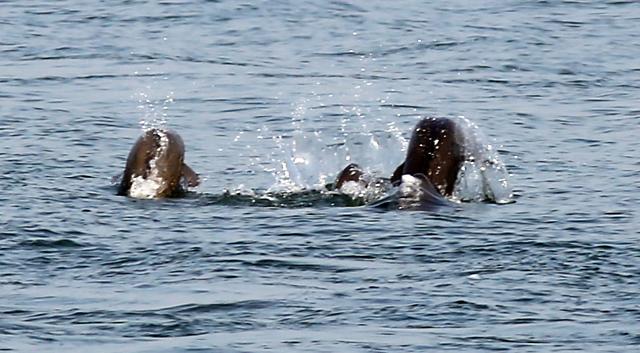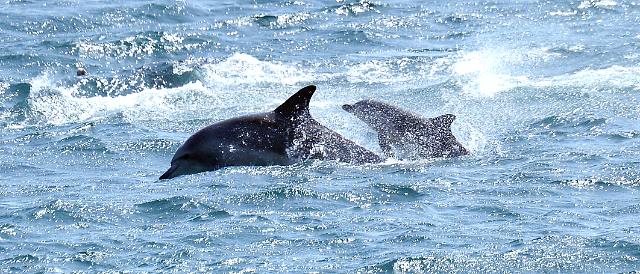
[Yonhap News Photo]
A state-run fishery science institute said it has been operating an experimental fishing net designed to prevent the finless porpoise, a threatened marine mammal, from being caught in it, as part of efforts to conserve the species.
The greatest threat of accidental death for finless porpoises, which mainly live in waters off of South Korea and other East Asian countries, is getting tangled in stow nets favored by fishermen.
About 13,000 of the animals lived in the Yellow Sea in 2011, a sharp drop from 36,000 in 2005, according to a survey conducted by Park Kyum-joon, a marine mammal expert at the National Institute of Fisheries Science.
Moreover, more than 1,500 individuals are found dead a year after being trapped in nets. If no effective measures are taken to address the situation, the species is feared to come to the brink of extinction in the coming years.'
The fishery science institute has tested the experimental stow net, which has a newly designed feature to allow the mammals to escape, since March. According to the institute, the specially designed net has turned out to be effective in letting finless porpoises escape and not drown.
Under the experiment, the institute asked fishery folks at a village in the town of Seocheon on South Korea's west coast to have two of the stow net-equipped fishing boats install 12 of the newly developed nets.
The new nets are an improved version of stow nets designed to release caught jellyfish. With a mouth 10 meters long and a main body 90 meters deep, the main net has an inner net that only allows fish to pass and excludes large jellyfish or finless porpoises. Finless porpoises are also able to escape from the net, if they still get caught, through what is called an "escape hole" in the middle of the net.
The institute made two variations of the new net -- one with tight meshes and the other with loose meshes -- to test the effect on the fishermen's catch that the use of the net would have.
No finless porpoises have been found trapped in the new nets, while 56 of them have been trapped in the conventional nets.
Finless porpoises usually come up to the surface of the water to breathe two to three times per minute, but can stay under water diving for prey for up to four minutes. However, if they are caught in a net, they can't come up for air at all and will drown.
The species is found in a narrow strip of shallow coastal waters around the western Pacific Ocean from the Taiwan Strait to the waters of northern China, the Korean Peninsula and southwestern Japan. In South Korea, the marine mammal is often called a smiling whale, as it looks like it is always smiling.
(Yonhap)


